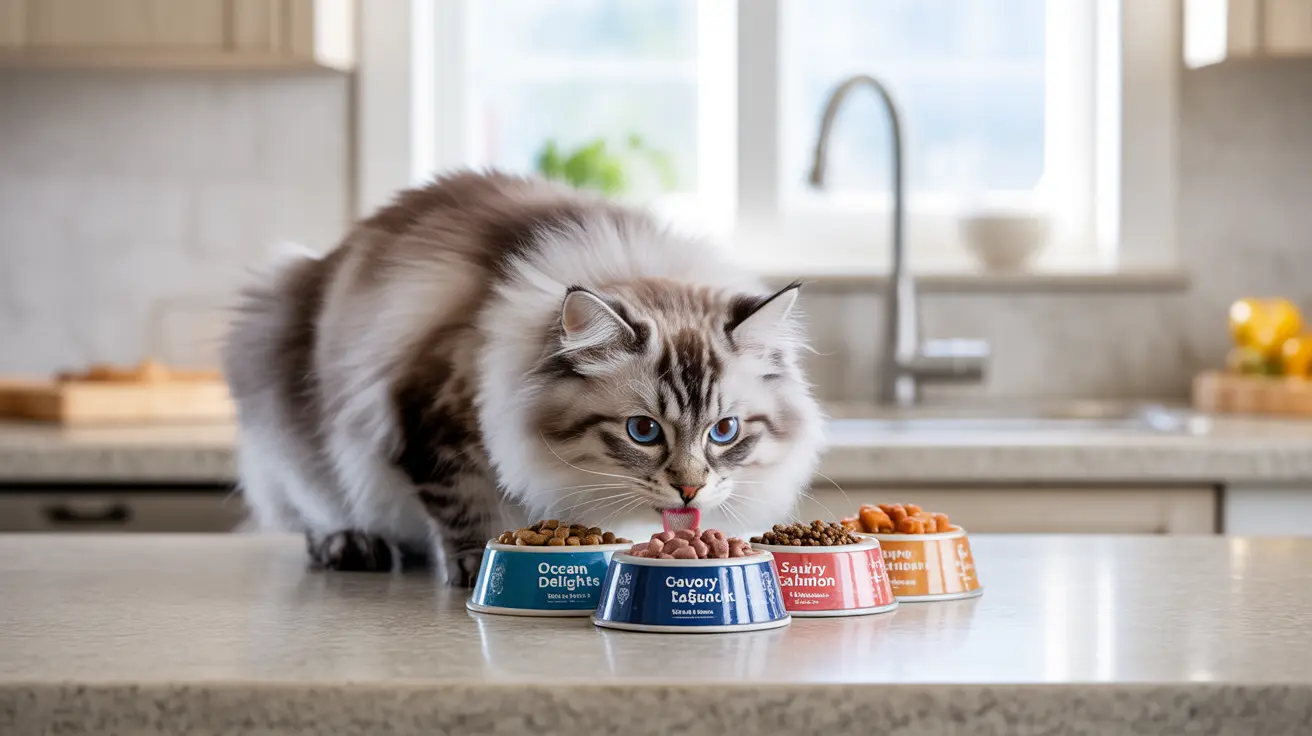Understanding Your Cat's Nutritional Needs
Cats are obligate carnivores, meaning they require specific nutrients that can only be found in animal-based proteins. A high-quality wet food diet should contain adequate levels of essential nutrients like taurine, arachidonic acid, and vitamin A. When considering different brands, it's crucial to ensure each option meets these fundamental nutritional requirements.
Look for wet food brands that prominently list real meat as their first ingredient and carry the "complete and balanced" designation from AAFCO (Association of American Feed Control Officials). This certification ensures the food meets all your cat's dietary needs.
Benefits of Feeding Different Wet Food Brands
Rotating between different wet food brands can offer several advantages for your cat:
- Prevents food boredom and reduces picky eating habits
- Provides a broader spectrum of nutrients from various protein sources
- May help prevent food allergies or sensitivities
- Offers different textures and flavors that can enrich your cat's eating experience
- Ensures dietary flexibility if one brand becomes unavailable
How to Safely Transition Between Brands
The key to success when introducing new wet food brands is a gradual transition. Follow this recommended schedule:
- Days 1-2: 75% current food, 25% new food
- Days 3-4: 50% current food, 50% new food
- Days 5-6: 25% current food, 75% new food
- Day 7: 100% new food
Monitor your cat's response during each transition phase. If you notice any digestive issues, slow down the transition process or consult your veterinarian.
Best Practices for Brand Rotation
To successfully maintain a varied wet food diet:
- Choose brands with similar quality standards and nutritional profiles
- Store opened wet food properly in the refrigerator
- Warm refrigerated food slightly before serving
- Keep a record of which brands and flavors your cat enjoys
- Monitor your cat's weight and overall health
Common Challenges and Solutions
While feeding different wet food brands can be beneficial, you might encounter some challenges:
Digestive Sensitivity
Some cats have sensitive stomachs. If this occurs, try brands with limited ingredients or stick to similar protein sources initially.
Food Selectivity
If your cat becomes picky, avoid switching brands too frequently and maintain at least one familiar option in rotation.
Frequently Asked Questions
Can I safely feed my cat different brands of wet food without causing digestive issues?
Yes, you can safely feed different brands of wet food to your cat when you introduce new brands gradually and ensure they're all high-quality, complete nutrition options.
How should I transition my cat gradually when switching between wet food brands?
Use a 7-day transition period, slowly increasing the proportion of new food while decreasing the old food. Start with 25% new food and increase by 25% every couple of days.
What are the benefits of rotating multiple brands of wet cat food in my cat's diet?
Rotating brands provides nutritional variety, prevents food boredom, reduces the risk of developing food sensitivities, and ensures dietary flexibility.
How do I choose high-quality wet cat food that meets my cat's nutritional needs?
Look for foods with real meat as the first ingredient, AAFCO's "complete and balanced" certification, and appropriate protein levels. Avoid brands with excessive fillers or artificial preservatives.
What signs indicate my cat might be having a negative reaction to a new wet food brand?
Watch for vomiting, diarrhea, decreased appetite, lethargy, or changes in bathroom habits. If you notice any of these signs, return to the previous food and consult your veterinarian.
Remember, every cat is unique, so what works for one may not work for another. Always observe your cat's response to new foods and adjust your approach accordingly. When in doubt, consult with your veterinarian about the best dietary choices for your specific cat.






